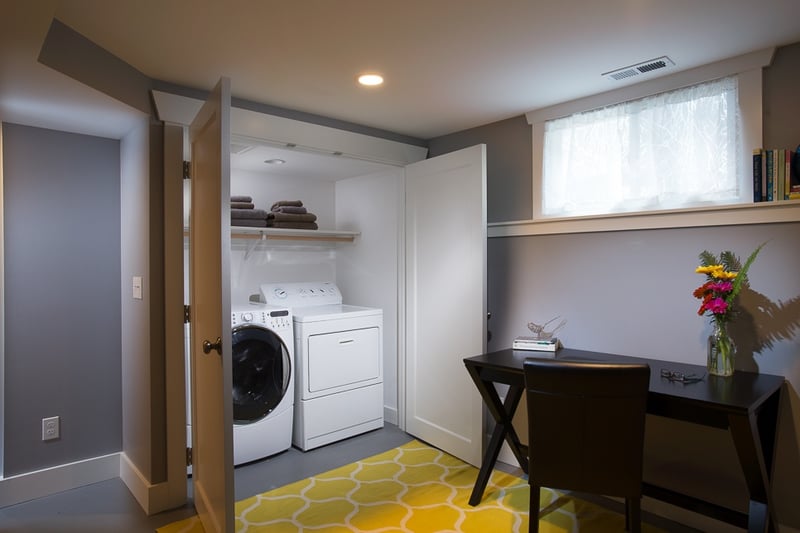Master Planning From Start to Finish


There is a common misunderstanding when it comes to home improvement projects. Many people assume that you need to remodel everything at once. These people spend years planning and saving for their remodel and all throughout that time, they are forced to live in a home that doesn’t meet their needs which can impact their quality of life.
Master Plan
If you have big dreams for your home but only the budget for your kitchen I have good news for you. It’s time to consider a master planning remodel project.
What’s the difference between a master plan and a whole house remodel?
In a sense, they are the same. A master plan remodel is when you partner with a design-build company to break your whole house remodel ideas into separate construction phases. A good design-build firm will ensure those phases maximize your budget and save you from doing extra work. These phases are often spread out over several years. A master plan doesn’t always have to be for a whole house remodel either. You can also master plan a basement project, backyard cottage, or a new primary suite.
Master plans can be spread out over a small period of time or an even longer time – up to 10 years. Keep in mind though, that the longer you spread out your plans the less time you’ll get to actually live in your newly remodeled spaces. There’s also a risk of styles and trends changing over a longer period of time.
When homeowners choose to master plan their remodel, they’ll pay for their remodel in phases that correlate with the timing of the work being done. But with a whole home renovation, you’ll need to pay for the entire remodel upfront, since the work is being tackled all at once.
What are the benefits of master planning my remodeling project?
Typically, people who want to remodel more than just one or two spaces in their home have to spend months, if not years, saving money for their project. Larger projects, including multiple rooms and/or additions, can range anywhere between $300,000 to $1M depending on the homeowners’ needs. With master planning, since it’s split into phases, you pay the cost of one project first but you do the schematic design for the entire master plan upfront. This way, you and the designer can decide which phase will be first and which projects will follow. If you chose not to master plan your projects, the order in which you remodel your rooms could get you into some trouble here and there.
People who don’t master plan almost always end up having to revisit parts of their previous remodels when they start a new one. Say you remodel your kitchen, then a year or so later you end up remodeling the bathroom that shares a wall with your kitchen. Well, now you have to tear open that same wall and move your electrical and plumbing again. If you had a master plan in place, the plumbing and electrical for your bathroom remodel would have been moved around during your kitchen remodel to save you time. Your builders would have been able to do this in advance since they would have had the bathroom and kitchen design completed together.
Choosing to master plan multiple construction phases will help future-proof your overall project. No one likes to do work twice, let alone pay for it twice, so the time it takes to map everything out in advance, will ultimately save you stress and lessen your overall budget impacts.
Will master planning help me save money?
The short answer is no, it won’t, but it will spread out the time you’ll need to pay for the remodel. This type of renovation plan is meant to help you get a high-budget remodel done in a longer period of time. All the steps of a whole-house remodel are the same but when you choose to master plan, the process is drawn out over several years. You’re still going to get that curb appeal and layout changes you want but you’ll have to invest your time and be patient. With a master plan, you won’t be throwing down a large lump sum right away. Instead, you’ll be paying over the course of time, giving you the opportunity to stick to a long-term budget that will give you the new house you want, ideally in three to five years time.
Master Planning Process
A good master plan will be a road map for your home’s cohesive look. Once you have an idea of the spaces you want to change and you’ve chosen the design-build firm you want to work with, the next step is sitting down with your designer to determine what will be included in your first remodel phase, also known as phase one. During this design phase, you will include all the common parts of your separate room remodels. If you are focusing on one big space, like a basement, you’ll complete the schematic design upfront then choose the finishes and fixtures later on in the final phase..jpg?width=800&name=Untitled-Artwork%20(2).jpg)
See also: Remodel Planning: Where to Start and the Order to Follow.
In which order should I tackle each phase?
Like I mentioned earlier, master planning is usually split into several phases. Ideally, phase one will include everything that needs to be done to make the other phases for the entire home more seamless. To help with this explanation, take a look at the graphic above. This master plan is just an example of a standard plan where the family wants to remodel their basement during the next couple of years. In phase one we will complete all foundation work, electrical, plumbing, and framing. In phase two we’ll add finishes and fixtures, and finish the stairs.
How do I know if master planning is right for me?
When it comes to home remodeling people often have whole-house-professional-remodel dreams but only a DIY-bathroom budget. If this resonates with you then master planning is the path you’ll want to take. One big difference between having a phased-out remodel versus a whole-house remodel is that phases are often spread out over several years. Not ideal if you want a change right now but a lot better for your budget.
Creating a Cohesive Plan
One of the struggles of remodeling, in general, is making sure you create a design you’ll love for years to come. It’s important to find a timeless style over something that is trendy. When it comes to master planning it’s important to stay with the same style and design for each phase even after the years go on throughout your remodel phases. Even if your style changes you’ll want to keep your remodeled spaces cohesive. This is why when you phase out a single project like a DADU you will pick out the finishes and fixtures in the final phase since your taste has likely changed since you started building the structure one to two years ago.
Experience is Necessary
Home renovation is a huge undertaking for you and your family. If you are in the process of purchasing a home that needs work or have recently done so, please feel free to reach out to us. We are happy to answer questions and try to help guide you through the process.
CRD Design Build specializes in design-build remodeling and has served Seattle for over 40 years. To learn more about home renovation, you can contact us and meet with our experts about creating the home of your dreams in a cost-efficient and timely manner.
See also: 10 Home Renovation Mistakes to Avoid.






